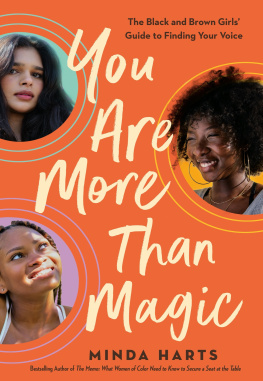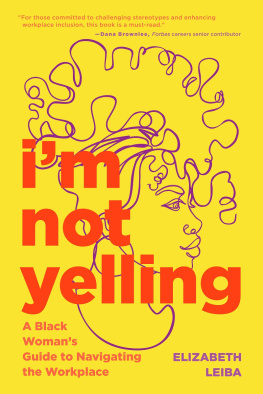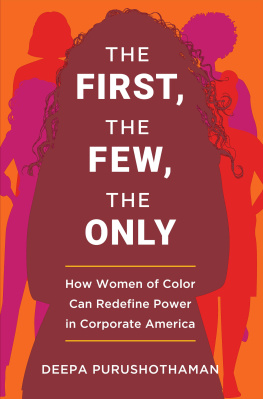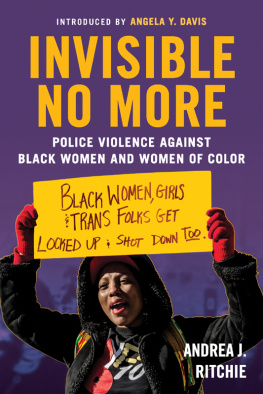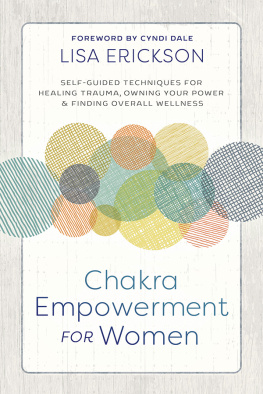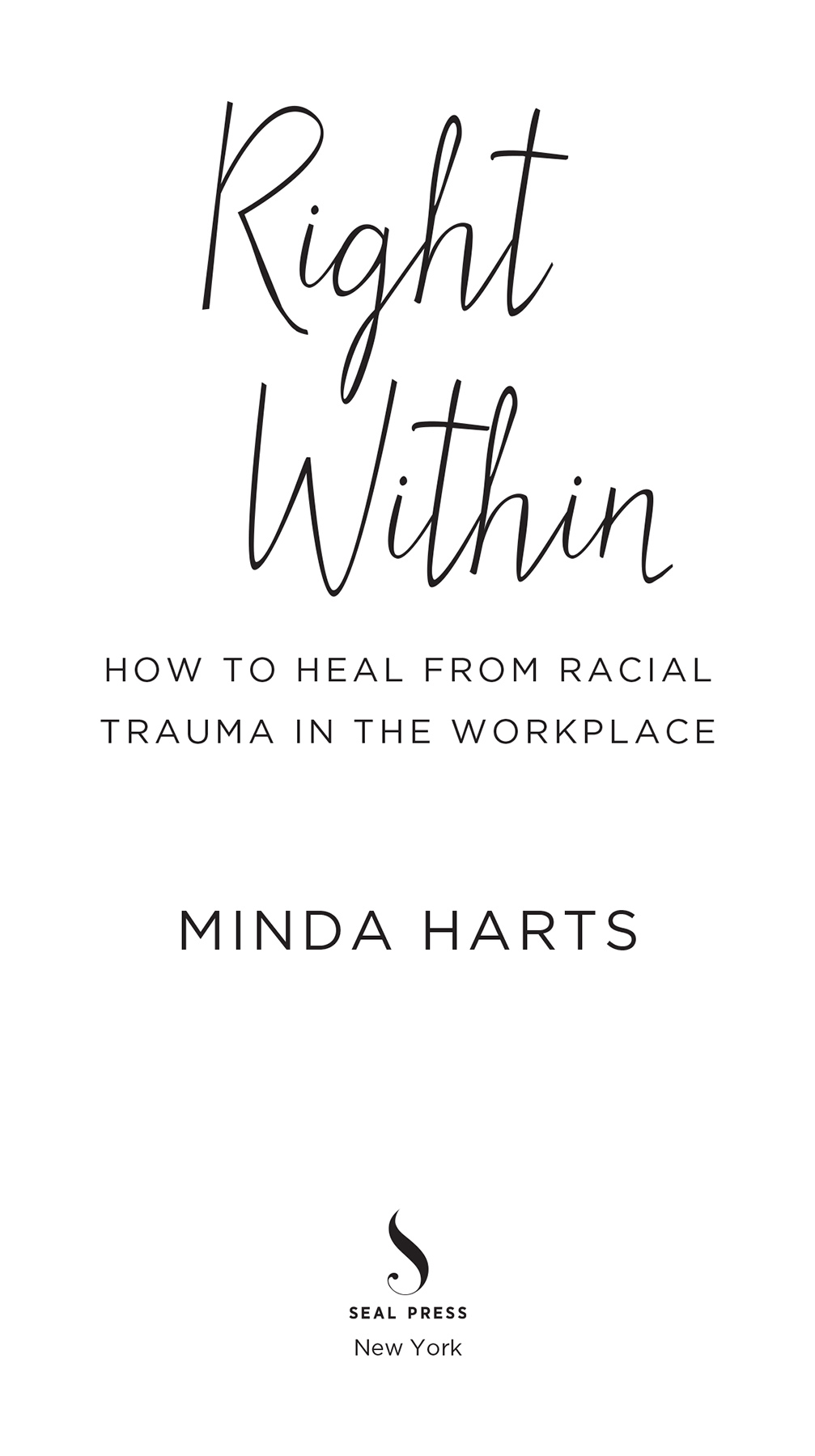Recovering from racial trauma is a radical act and a labor of love. In an act of brave vulnerability, Harts explains step-by-step how she healed, and how you can too. If you want to be a better champion for your colleagues who have experienced racism at work, or a boss who creates a work environment that heals rather than retraumatizing your employees, this is the book you need to read. Now.
Kim Scott, New York Times bestselling author of Radical Candor
Being invited to the table is not the same as being welcomed and valued at the table, which is what women of color continue to aspire to in the workplace. Right Within compels women of color across generations to address racialized trauma by speaking up, healing from within, and identifying triggers. You will benefit greatly from reading it and putting its wisdom into practice.
Melonie Parker, chief diversity officer, Google
A moving guide to healing and equity. Harts is a voice to be reckoned with. Everyone needs to read this book.
LaTosha Brown, co-founder of Black Voters Matter
Harts highlights that what matters most is valuing you, and trusting yourself enough to push through obstacles faced on a daily basis. A powerful, necessary read for women of colorand everyoneseeking to tap into their resilience from within.
Barbara Whye, VP of diversity and inclusion, Apple
Harts puts so much that needs to be said into words, and her advice is priceless. This is the guide weve been waiting for.
La La Anthony, TV producer, actress, and author of The Love Playbook
With resilience and self-preservation, Harts guides the reader through her personal journey, providing expert advice on how we, too, can overcome and heal from ongoing racial discrimination.
Dr. Sheila Robinson, Publisher & CEO, Diversity Woman Media
Dedicated to all the Black women who were told they had to be strong for someone else, instead of for themselves.
I think we need people with courage and vision.
Octavia E. Butler
Copyright 2021 by Minda Harts
Cover images Peathegee Inc via Getty Images; metamorworks / Shutterstock.com
Cover copyright 2021 Hachette Book Group, Inc.
Hachette Book Group supports the right to free expression and the value of copyright. The purpose of copyright is to encourage writers and artists to produce the creative works that enrich our culture.
The scanning, uploading, and distribution of this book without permission is a theft of the authors intellectual property. If you would like permission to use material from the book (other than for review purposes), please contact permissions@hbgusa.com. Thank you for your support of the authors rights.
Seal Press
Hachette Book Group
1290 Avenue of the Americas, New York, NY 10104
www.sealpress.com
@sealpress
First Edition: October 2021
Published by Seal Press, an imprint of Perseus Books, LLC, a subsidiary of Hachette Book Group, Inc. The Seal Press name and logo is a trademark of the Hachette Book Group.
The Hachette Speakers Bureau provides a wide range of authors for speaking events. To find out more, go to www.hachettespeakersbureau.com or call (866) 376-6591.
The publisher is not responsible for websites (or their content) that are not owned by the publisher.
Print book interior design by Trish Wilkinson.
Library of Congress Cataloging-in-Publication Data
Names: Harts, Minda, author.
Title: Right within: how to heal from racial trauma in the workplace / Minda Harts.
Description: New York: Seal Press, 2021. | Includes index. |
Identifiers: LCCN 2021022124 | ISBN 9781541619623 (hardcover) | ISBN 9781541619630 (ebook)
Subjects: LCSH: Diversity in the workplace. | Minority womenEmployment. | Microaggresions.
Classification: LCC HF5549.5.M5 H3687 2021 | DDC 658.3008dc23
LC record available at https://lccn.loc.gov/2021022124
ISBNs: 978-1-5416-1962-3 (hardcover), 978-1-5416-1963-0 (ebook)
E3-20210907-JV-NF-ORI
I chose to change some identifying details such as locations, companies, organizations, occupations, and names of those I worked with in the past. I consciously made the decision to maintain their anonymity. I have recalled my racially charged experiences in the workplace and conversations based on my memory of them. Additionally, the stories that I share from other women of color about their workplace experiencestheir stories are told based on their perception and/or experiences related to the inequality they faced. All the resources shared in this book are only recommendations; so please, do your own research and due diligence if you decide to use them going forward.
H ow would I describe my life in the year 2020 in just one word? I would probably say stressed. As a Black woman who spent the majority of that year inside my apartment due to the pandemic, stressed might not even begin to fully capture my emotional state. I guess you could say that in addition to feeling stressed because I didnt want to catch the coronavirus, I was also exhausted due to the racism on full display from the highest office in this country, the presidency.
Oh come on, dont act like you forgot how crazy 2020 was. Masks, hand sanitizer, and bleach were hard to come by. It was also a huge election year, and many of us were feeling like our backs were against the wall. I felt like the Chicago rap group Do or Die: I was willing to ride in the back seat of any Caddy if it meant I would never have to see Donald in that office ever again. I had so many conversations with friends about what options were available to us if Trump got another four years in office. We were legit nervous, anxious, and downright scared of where things were headed for minorities in our country. I had never felt worried about being a Black woman in this country until 2020.
I remember going on long strolls with my mask on around the nearby pond, but toward the end of that year, I avoided unnecessary walks because I feared being attacked or verbally assaulted. I still would walk my dog, but whenever I saw a pickup truck, I immediately felt triggered because I thought about Ahmaud Arbery. He was just out for a jog and then was gunned down by three white men in a pickup truck in Georgia. Some might say, That is ludicrous, Minda , but that is how I felt, and as much as I didnt want to feel that way, my fear was real for me. My uncle in my head, the late James Baldwin, said, I love America more than any other country in the world and, exactly for this reason, I insist on the right to criticize her perpetually. I felt this same conflicted love for the only country I have ever lived in, and all I wanted was for it to love my people back. Was that too much to ask?
I began to understand why people like Marcus Garvey felt the need to return to Africa. But I also connected with Angela Daviss work: she wanted to stay and fight to dismantle a system that has never worked for us, and fight for the generations who havent yet been born. I grappled heavily with the trauma I felt when Trayvon Martins young life was brutally taken from him, and in 2020 I felt that pain all over again with the deaths of Breonna Taylor and George Floyd. So I guess we can add a third word to describe my feelings in 2020: triggered .
What more can we do, how many more marches do we need to have, to convince folks that Black Lives Matter? I felt triggered by all the racial unrest. I started to thank God that at that time in my life I didnt have a traditional job in corporate America, because I dont think I could have shown up in a virtual environment and pretended like everything was business as usual. Nor could I work for a company that still refused to even state publicly that my life mattered. I woke up every morning and said a little prayer for my sisters who had struggled the night before and then had to deal with a sea of white faces on Zoom or Google Hangouts and pretend that this sh*t didnt weigh them down like a ton of Hefty garbage bags.


